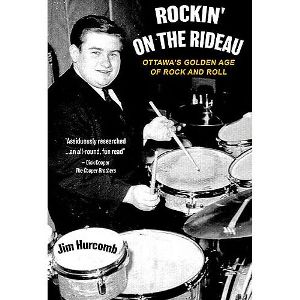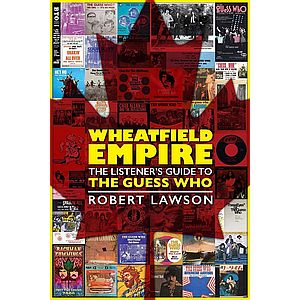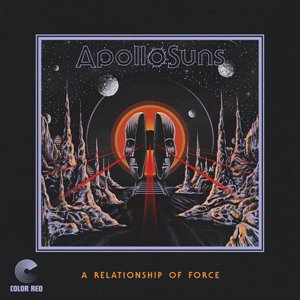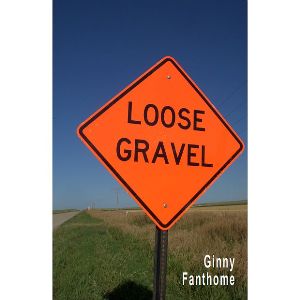| |
Jim Hurcomb

Rockin' on the Rideau
Friesen - 2021
Michael Panontin
|
Ever since its days as a rough-and-tumble logging town on the Rideau River, our nation's capital has often played second fiddle to its more metropolitan siblings up and down the St. Lawrence. Ottawa's reputation as a boring backwater, especially to Torontonians and Montrealers, is legendary. Jan Morris - perhaps the most perceptive urban globetrotter the world has known - actually took a liking to the place, but still the Welsh writer doubted "if one educated person in ten thousand could place Ottawa with the remotest degree of accuracy upon a blank map". Hyperbole perhaps, but more to the point, how many of those same people could name a singer or group from the city, save for Paul Anka or - and this might be pushing it - the Five Man Electrical Band?
Rockin' on the Rideau: Ottawa's Golden Age of Rock and Roll is Jim Hurcomb's attempt to rectify that. In his informative and highly readable book, the longtime broadcaster takes pains to highlight the rich musical history that took place there, from the innocent early days of rock 'n' roll in the mid-fifties right through to the bell-bottomed and drug-addled trips of the late sixties.
As Hurcomb is quick to point out, Ottawa was responsible for a number of musical firsts up here in Canuckistan. For one thing, thanks to British ex-pat Sandy Gardiner, a Scottish journalist who had written for the prestigious New Musical Express before relocating to Ottawa in 1962, the city was hip to the Fab Four long before much of the continent. It was Gardiner, with an ear still tuned to the musical happenings back home, who wrote an article for The Ottawa Journal titled Beatlemania, allegedly the first time the word was ever used in the North American press. Gardiner in fact had his fingers in a number of pies, including his role as manager of the Esquires, whose popular 1964 instrumental 'Man from Adano' was the first music video ever shot in Canada.
A little farther afield was the RCA Records pressing plant in nearby Smiths Falls, which serious Canuckistani scholars will recognize as the place that pressed up all the early Beatles records for Capitol. Canada's run of early Beatles singles more closely reflected the UK releases, whereas US collectors had to make do with all those inferior, or at least perceived inferior, pressings on the Vee Jay, Swan and Tollie labels. As Hurcomb writes, "Serious fans and the more reputable retailers looked north and saw pristine Beatles records on a major label and licked their lips."
And here's where things get really interesting. As one former employee of the plant recalled, "There were literally railway cars at a siding in Smiths Falls that were, under cover of night, taking boxes and boxes of Beatles records across the border." A clear example of the US playing catch-up with their Canadian neighbours and of Ottawa breaking the ground for them.
Rockin' on the Rideau for the most part reflects the standard rock 'n' roll narrative, with Elvis' performance there on April 3, 1957 at the old Ottawa Auditorium and the Beatles' first appearance on the Ed Sullivan show in early 1964 busting the local scene wide open on both occasions. The former broke the city out of its country straitjacket, launching early rock 'n' roll stalwarts like Hi-Tones, the Jive Rockets and Hughie Scott, while that Beatles episode begat the Townsmen, the Staccatos and the plethora of garage rock bands that made up the talented roster at the Sir John A label, easily Canada's most interesting indie imprint of the 1960s.
If the short chapter on that iconic label doesn�t set the heartbeats of serious collectors aflutter, the following separate entries on the likes of Don Norman and the Other Four, the Five D, the Eyes of Dawn, the Eastern Passage and Thee Deuces ‒ all part of Sir John A�s illustrious roster ‒ most certainly will. Even the Skaliwags, who were not a Sir John A band but whose obscure 1967 single on the Excellent label, '365 Days a Year', is a personal fave, get their due. Add to that the infamous Animals riot of March '67 and the alleged sighting of George Harrison at the Le Hibou club in '69 (for which Hurcomb gives some fascinating but still unconvincing proof that the event actually took place), and the book crosses the line into essential reading territory.
At 188 pages, Rockin' on the Rideau offers more of a superficial scraping than the sort of deep digging the city's cultural heritage probably warrants. And the astute reader will probably be left pondering the absence of doo wop, girl group, jazz or soul music - Hurcomb's own bias perhaps or Ottawa's cultural homogeneity at the time? And while we're quibbling here, with the sheer number of bands and events mentioned in the book, a well-stocked index would certainly save the reader a lot of page-flipping. Still, the stories of Canada's smaller scenes and less-than-million-selling artists are precisely the sort that need to be told. The more curious music fans out there would be wise to pick up this book.
|
|
Suggestions

Robert Lawson
Wheatfield Empire: The Listener's Guide to the Guess Who
Friesen

High Wasted
Germ Free High Fives (download track)
(independent)

Apollo Suns
A Relationship of Force
Color Red

Monkey Dragon
Enter the Multiverse
Sonicturtle

Ginny Fanthome
Loose Gravel
(independent)
|








